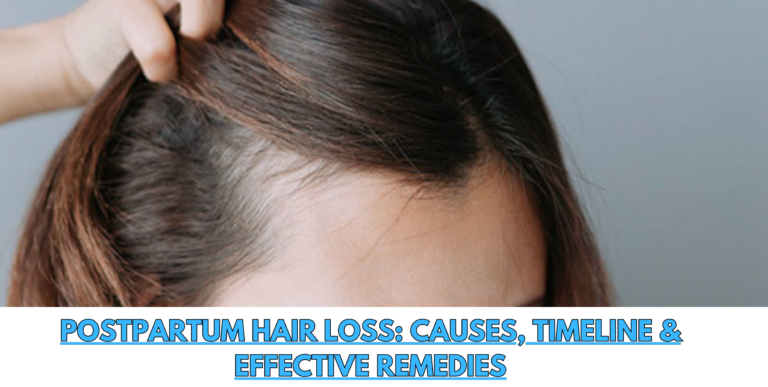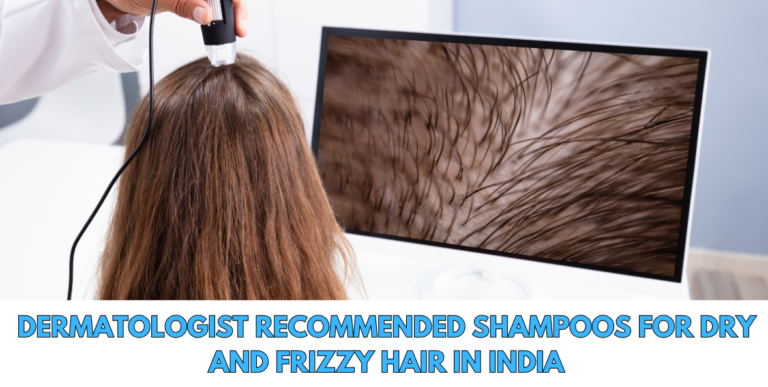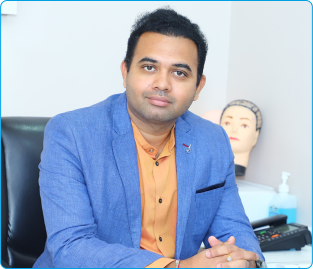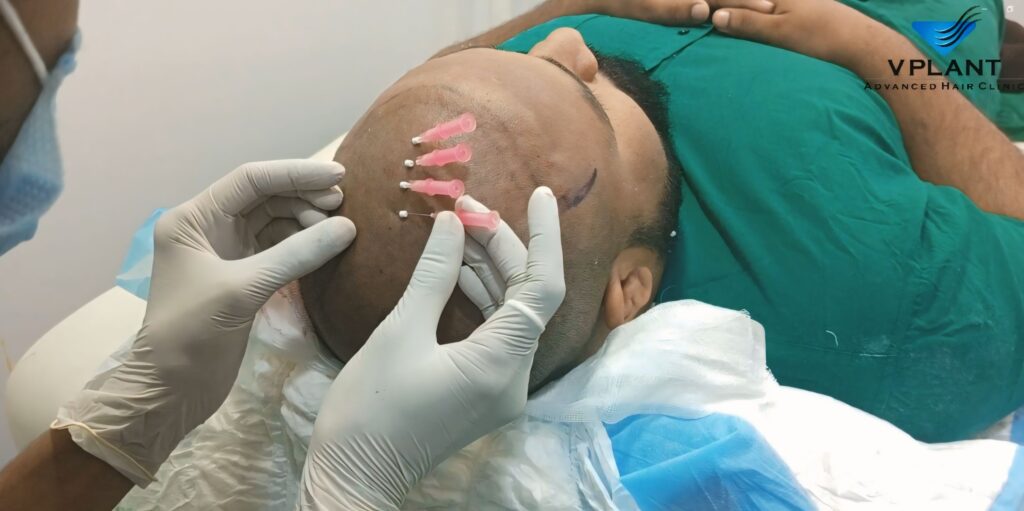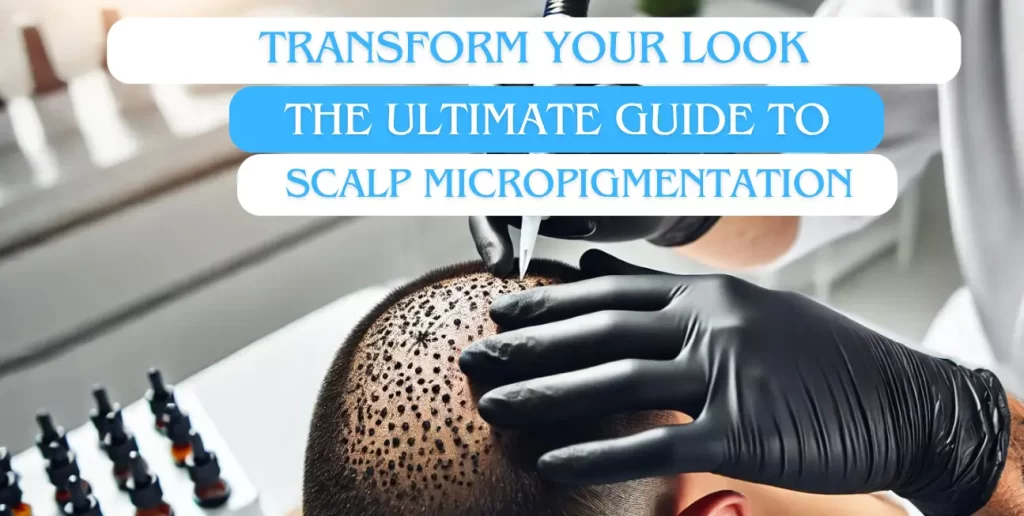Introduction
Hair loss is more than just a cosmetic concern—it affects self-confidence, emotional well-being, and overall appearance. Whether you’re experiencing thinning hair, a receding hairline, or excessive shedding, you are not alone. Millions of men and women worldwide seek effective, long-term solutions to hair regrowth, but many hesitate to undergo hair transplant surgery.
That’s where Bio Hair PRP Treatment comes in. Over the past few years, Platelet-Rich Plasma (PRP) therapy has gained recognition as one of the best non-surgical solutions for hair restoration. But how does it work? And is it truly the game-changer it’s made out to be?
As a dermatologist and trichologist with over two decades of experience, I have treated thousands of patients struggling with hair loss. In this guide, I will walk you through everything you need to know about Bio PRP for hair regrowth, share personal insights from my clinical practice, and provide you with a clear roadmap to achieving thicker, healthier hair—naturally.
Key Takeaways:
✔ What is Bio PRP? A cutting-edge, growth-factor-rich treatment that stimulates hair follicles naturally.
✔ Who is it for? Men and women suffering from androgenetic alopecia, thinning hair, or excessive shedding.
✔ Why choose PRP therapy? Safe, non-surgical, with no downtime and lasting results.
✔ What results can you expect? Thicker, stronger hair with visible improvement in 3-6 months.
Table of Contents
- What is Bio Hair PRP Treatment and How Does It Work?
- Bio PRP vs Traditional PRP: What’s the Difference?
- Key Benefits of PRP Therapy for Hair Loss
- PRP Hair Restoration Before and After: What Results Can You Expect?
- Best PRP for Hair Growth: Choosing the Right Treatment for You
- How Does Bio PRP Work? The Science Behind the Treatment
- Bio PRP Hair Therapy Cost: Is It Worth It?
- Best Clinics for Bio Hair PRP: What to Look for in a Specialist
- PRP Injections for Hair Thinning: Are You a Good Candidate?
- What to Expect During and After PRP Therapy
What is Bio Hair PRP Treatment and How Does It Work?
If you’re struggling with hair thinning, excessive shedding, or early-stage hair loss, you might feel frustrated trying different shampoos, serums, and home remedies—only to see little to no improvement. I get it. As a dermatologist specializing in hair restoration, I’ve worked with countless patients who felt the same way. But here’s the good news: modern advancements in hair restoration have made it possible to naturally regrow hair without surgery—and Bio Hair PRP Treatment is one of the best options available today.
What is Bio Hair PRP Treatment?
Bio Hair PRP (Platelet-Rich Plasma) Therapy is an advanced, non-surgical hair restoration treatment that uses your own blood’s natural healing power to stimulate dormant hair follicles. Think of it as a natural fertilizer for your scalp, helping weak follicles regain strength and promoting thicker, healthier hair growth.
This treatment works by extracting growth-factor-rich platelets from your own blood and injecting them into areas where hair is thinning. These platelets contain powerful growth factors that boost hair follicle activity, improve blood circulation to the scalp, and reduce inflammation that contributes to hair loss.
How Does Bio Hair PRP Work?
The procedure is simple, safe, and minimally invasive, usually completed in under an hour. Here’s what to expect:
1️⃣ Blood Draw: Just like a routine blood test, a small sample of blood is taken from your arm.
2️⃣ Centrifuge Process: The blood is then placed in a centrifuge, a special machine that spins at high speed to separate the platelet-rich plasma (PRP) from red blood cells. This process takes about 10-15 minutes and concentrates the healing factors in your blood.
3️⃣ PRP Injection: Once the platelet-rich plasma is ready, it is strategically injected into areas of thinning hair using a fine needle. Don’t worry—a numbing cream is applied beforehand to minimize discomfort.
4️⃣ Follicle Activation: The growth factors in PRP immediately go to work, stimulating hair follicles, improving scalp blood circulation, and triggering natural hair regrowth over the next few months.
Why is Bio PRP More Effective Than Traditional PRP?
Unlike traditional PRP treatments, Bio PRP is specially formulated to contain higher concentrations of platelets and additional growth factors, leading to more effective follicle stimulation and longer-lasting hair regrowth.
🔗 Learn more about the difference between Bio PRP and Traditional PRP in this detailed comparison from a leading dermatology clinic.
Is Bio PRP Right for You?
If you are experiencing thinning hair, receding hairlines, or early hair loss, this treatment could be the breakthrough solution you’ve been looking for. It’s particularly effective for men and women with androgenetic alopecia (pattern hair loss) and those seeking a natural alternative to hair transplants.
🔗 Explore real PRP hair restoration success stories from top dermatology clinics worldwide on WebMD.
Final Thoughts
Losing hair can be emotionally draining, but you don’t have to accept hair loss as your new reality. With Bio Hair PRP Treatment, you can reclaim your confidence and enjoy fuller, healthier hair—naturally.
Bio PRP vs Traditional PRP: What’s the Difference?
One of the most common questions my patients ask is: “What’s the difference between Bio PRP and Traditional PRP therapy?” I completely understand the confusion—both treatments use Platelet-Rich Plasma (PRP) to stimulate hair regrowth, but there are key differences that can impact effectiveness, longevity, and the number of sessions required.
Let’s break it down in simple terms.
What is Traditional PRP Therapy?
Traditional PRP is a well-established treatment where we draw a small amount of your own blood, spin it in a centrifuge, and separate the platelet-rich plasma from other blood components. These platelets contain powerful growth factors, which we inject back into your scalp to stimulate hair follicles, improve blood circulation, and boost hair growth.
✅ Effective for hair thinning and early-stage hair loss
✅ Uses your body’s natural healing process
✅ Safe, with minimal side effects
However, traditional PRP may require multiple sessions (often 4-6 sessions) over several months to achieve significant results.
What Makes Bio PRP Different?
Bio PRP Treatment is like PRP 2.0—a more advanced version designed to enhance hair follicle regeneration and provide longer-lasting, faster results.
✔ Higher Concentration of Growth Factors: Bio PRP is enriched with additional regenerative proteins to supercharge hair regrowth.
✔ Fewer Sessions Required: Because Bio PRP has a stronger healing potential, you may need fewer treatments compared to traditional PRP.
✔ Longer-Lasting Benefits: Patients report more sustained hair thickening and reduced shedding for a longer period.
Which One Should You Choose?
If you’re experiencing mild to moderate hair thinning, traditional PRP may be a great starting point. However, if you’re looking for more effective, faster, and longer-lasting results, Bio PRP Treatment is the better option.
Where Can You Get the Best PRP Therapy?
When choosing a PRP hair treatment, make sure your clinic uses advanced PRP processing techniques and is led by experienced specialists.
Key Benefits of PRP Therapy for Hair Loss
I understand that dealing with hair loss can be frustrating, sometimes even emotionally exhausting. Many of my patients come to me feeling discouraged after trying multiple treatments with little to no success. That’s why I often recommend Platelet-Rich Plasma (PRP) Therapy—a safe, natural, and effective way to restore hair growth without surgery. Let’s go over why this treatment might be the right choice for you.
💡 Non-Surgical Solution – No incisions, no scars, and no long recovery periods
One of the biggest advantages of PRP Therapy for Hair Loss is that it’s completely non-surgical. Unlike hair transplants, which involve surgical procedures and downtime, PRP therapy is quick and minimally invasive. The process involves drawing a small amount of your blood, processing it in a centrifuge, and reinjecting the enriched plasma into your scalp. The best part? You won’t have to deal with incisions, stitches, or a long recovery period.
💡 Stimulates Natural Hair Growth – Awakens dormant hair follicles and reduces future hair loss
PRP isn’t just about stopping hair loss—it rejuvenates your existing hair follicles. Many patients ask me, “Will this actually regrow my hair?” The answer is: Yes! PRP therapy contains growth factors that stimulate weak or dormant hair follicles, encouraging them to produce thicker, healthier hair. Over time, you’ll notice less shedding, stronger hair, and even new baby hairs growing in previously thinning areas.
📌 Want to see real results? Check out our PRP Hair Restoration Before & After Gallery (Internal Link).
💡 Safe & Biocompatible – Uses your own blood, eliminating any risk of allergic reactions
Unlike medications or synthetic treatments, PRP is 100% natural because it comes from your own blood. This means there’s no risk of an allergic reaction or complications from foreign substances. It’s a great option for patients looking for a safe and holistic approach to hair regrowth without relying on chemicals.
💡 Minimal Downtime – Quick procedure with same-day recovery
Many of my patients worry about taking time off work or social commitments for hair restoration treatments. With PRP, that’s not an issue. The entire procedure takes about 45-60 minutes, and you can go back to your daily routine the same day. You might experience some mild redness or tenderness, but this subsides within 24-48 hours.
📌 Curious if PRP therapy is right for you? Take our free online hair test to get a personalized consultation (Internal Link).
Final Thoughts
If you’re looking for a natural, effective, and non-surgical way to fight hair loss, PRP Therapy might be your best option. I’ve seen remarkable transformations in my patients who have undergone this treatment, and I’d love to help you achieve the same.
PRP Hair Restoration Before and After: What Results Can You Expect?
One of the most common questions I hear from my patients is: “When will I start seeing results from PRP therapy?” I completely understand why. Hair loss can be emotionally challenging, and when you start a new treatment, you want to know that your time, effort, and investment will pay off. The good news? PRP Therapy for Hair Loss delivers noticeable, natural results, but like any biological process, it takes time.
Let me walk you through what to expect month by month after starting PRP hair restoration therapy.
✔ Month 1: Reduced Hair Shedding
During the first month, you may not see visible new hair growth yet, but an important change is already happening—your hair shedding slows down significantly.
- Many of my patients tell me, “Doctor, I’m not seeing hair all over my pillow or in my shower drain like before.”
- This is a sign that the growth factors in PRP are strengthening your hair follicles, preventing further loss.
- Your scalp may feel healthier, and your existing hair may appear less brittle.
✔ Month 2-3: New Baby Hairs Start Appearing
Now, this is where things get exciting! Around the second or third month, you may start noticing fine, soft baby hairs growing in areas where you were previously thinning.
- These new hairs might be lighter and thinner at first, but don’t worry—they will gradually thicken over time.
- Many patients notice improved texture and volume, and their hair starts to feel stronger and more resilient.
- I often tell my patients to take progress pictures every month because sometimes the changes are subtle, but when compared side by side, they’re incredibly motivating!
📌 Curious about real patient experiences? Check out our PRP Hair Restoration Before & After Gallery (Internal Link).
✔ Month 4-6: Fuller, Thicker Hair with Better Volume
By month four to six, most patients see a significant improvement in both the density and thickness of their hair.
- The baby hairs from earlier months start to mature, blending naturally with your existing hair.
- Many patients tell me that their hair feels fuller, stronger, and easier to style.
- You might also notice less scalp visibility, especially in thinning areas.
This is usually the time when people start receiving compliments from friends and family—and trust me, nothing feels better than hearing someone say, “Wow, your hair looks amazing!”
Long-Term Maintenance and What’s Next
While PRP is highly effective, hair restoration is an ongoing process. Most patients benefit from maintenance sessions every 6-12 months to keep their newly regrown hair healthy and strong.
If you’re looking for a safe, natural, and effective way to combat hair loss, PRP hair restoration could be the perfect solution for you.
📌 Want to see if PRP is right for you? Take our free online hair test and get a personalized consultation today! (Internal Link).
Final Thoughts from Dr. Amit Agarkar
I’ve helped thousands of patients regain their confidence through PRP therapy. I know how disheartening hair loss can be, but I also know how life-changing it is when you see your hair growing back. If you’re considering PRP, I’d love to help guide you on this journey.
Bio PRP Hair Therapy Cost: Is It Worth It?
One of the most common questions my patients ask is: “How much does PRP therapy cost?” I completely understand that hair restoration is an investment, and you want to be sure that you’re making the right decision. Let’s break down the cost of Bio PRP Hair Therapy and whether it’s truly worth it in the long run.
💰 How Much Does PRP Therapy Cost?
The cost of PRP Therapy for Hair Loss can vary depending on several factors, such as the clinic’s reputation, the expertise of the dermatologist, the quality of PRP technology used, and the number of sessions required. On average, you can expect to pay:
✔ 5000 – 8500 per session
✔ Most patients require 3-4 sessions spaced 4-6 weeks apart for optimal results
✔ Some clinics offer package deals that reduce the per-session cost
📌 Why is PRP Therapy More Cost-Effective Than Other Hair Loss Treatments?
Many people spend hundreds, if not thousands of dollars, over the years on temporary solutions like medications, hair fibers, and topical treatments—most of which only work as long as you use them. Unlike these solutions, PRP therapy works to rejuvenate your hair follicles, promoting long-lasting hair regrowth rather than just masking the issue.
✔ Unlike Minoxidil (Rogaine) or Finasteride (Propecia), PRP therapy has no daily maintenance.
✔ No need for expensive hair fibers or hair concealers every month.
✔ PRP enhances your natural hair—no wigs or artificial enhancements needed!
🔹 Read more about PRP’s long-term effectiveness on Mayo Clinic (External Link).
💡 What Are You Paying For?
✔ Expertise of a board-certified dermatologist or trichologist
✔ State-of-the-art PRP technology for maximum hair regrowth
✔ High-quality, concentrated platelet-rich plasma for better results
Choosing a cheaper provider may mean lower quality PRP or ineffective results. Always ensure you’re getting treatment from a qualified professional with the latest PRP advancements.
📌 Is PRP Hair Therapy Worth the Investment?
If you’re looking for a long-term, natural solution for hair loss, Bio PRP Therapy is one of the best investments you can make. Instead of temporary fixes, PRP focuses on stimulating real hair growth, making it a cost-effective and reliable choice in the long run.
📌 Want to find out if PRP therapy is right for you? Take our free online hair test to get a personalized consultation (Internal Link).
If you have any questions about PRP pricing, financing options, or how many sessions you might need, feel free to schedule a consultation with me. Let’s work together to restore your confidence with healthier, fuller hair! 🚀
Best Clinics for Bio Hair PRP: What to Look for in a Specialist
Choosing the right clinic for Bio Hair PRP Therapy is one of the most important decisions you’ll make on your hair restoration journey. I always tell my patients: PRP therapy is only as effective as the expertise of the specialist performing it. While PRP itself is a scientifically backed treatment, the skill of the doctor, the technology used, and the clinic’s standards make all the difference in results.
If you’re considering PRP therapy for hair loss, here’s what you should look for in a top-quality clinic and specialist.
🔹 Experienced Professionals – Choose a Board-Certified Dermatologist or Trichologist
PRP therapy might sound simple—it’s just injections, right? But there’s much more to it than meets the eye. The concentration of platelets, the injection technique, and the precision of application all play a huge role in the effectiveness of the treatment.
✔ Always look for a board-certified dermatologist or trichologist who specializes in hair loss treatments.
✔ Check the doctor’s credentials, experience, and patient reviews.
✔ Avoid general cosmetic clinics that offer PRP as a side service without real expertise in hair restoration.
🔹 Advanced PRP Technology – Clinics Offering Bio PRP Therapy Deliver Better Results
Not all PRP treatments are the same. The quality of PRP depends on how it’s processed and the type of PRP technology used. The best clinics use advanced centrifuge systems to ensure a high concentration of platelets, which directly affects how well PRP can stimulate hair growth.
✔ Ask your clinic if they use Bio PRP Therapy—an enhanced version of PRP that includes higher growth factor concentration for better results.
✔ Check if they use single-spin or double-spin centrifuge technology (double-spin PRP is more effective for hair regrowth).
✔ Clinics that combine PRP with microneedling or laser therapy often achieve better, faster results.
🔹 Before-and-After Results – Check Reviews and Real Patient Testimonials
Seeing is believing! A reputable clinic should be transparent about their results and have before-and-after photos of real patients.
✔ Read online reviews from trusted sources like Google Reviews, Healthgrades, and RealSelf.
✔ Look for before-and-after photos of patients with similar hair loss patterns to yours.
✔ Ask the clinic for patient testimonials or if they offer consultations with past patients who have undergone PRP hair therapy.
📌 Curious to see real results? Check out our PRP Hair Restoration Before & After Gallery (Internal Link).
Final Thoughts
Choosing the right clinic for PRP therapy is just as important as deciding to undergo treatment in the first place. The expertise of your specialist, the technology used, and proven patient results will ensure you get the best outcome.
PRP Injections for Hair Thinning: Are You a Good Candidate?
The short answer? It depends on your stage of hair loss. While PRP injections are an excellent treatment for hair thinning and early-stage baldness, they aren’t a miracle cure for completely bald areas. Let’s break it down so you can see if you’re a good candidate for PRP therapy.
✅ Ideal for Those Experiencing Early-to-Moderate Hair Loss
If your hair is thinning but still present, PRP therapy can help reverse miniaturization (shrinking hair follicles) and strengthen existing strands. This means if you’ve noticed:
✔ A widening part
✔ More scalp visibility in certain areas
✔ Increased shedding in the shower or on your pillow
✔ Overall loss of hair density
Then PRP can help rejuvenate your follicles and slow down the hair loss process. Many of my patients in this stage see thicker, fuller hair within 3-6 months of starting treatment.
📌 Want to see what PRP results look like? Check out our PRP Hair Restoration Before & After Gallery (Internal Link).
✅ Best for Individuals with Androgenetic Alopecia (Male/Female Pattern Baldness)
PRP injections work particularly well for individuals with androgenetic alopecia (male or female pattern baldness)—one of the most common causes of progressive hair thinning.
For men, this often looks like:
✔ A receding hairline
✔ Thinning on the crown
✔ More visible scalp in certain areas
For women, this usually presents as:
✔ Diffuse thinning (hair getting finer all over the head)
✔ A widening part
✔ A see-through scalp when hair is wet or tied back
If caught early, PRP can strengthen hair follicles, improve density, and slow down hair loss before it progresses further.
❌ Not Suitable for Those with Completely Bald Areas
If you’ve already lost all the hair in a particular area, PRP alone won’t be able to regrow hair from scratch. This is because PRP therapy rejuvenates existing hair follicles, but it cannot create new ones where follicles are already dead.
In cases of advanced baldness, a hair transplant may be a better option. Some patients combine PRP therapy with a hair transplant to:
✔ Improve graft survival after a hair transplant
✔ Enhance post-transplant healing and hair growth
📌 Wondering if PRP or a hair transplant is right for you? Take our free online hair test for a personalized consultation (Internal Link).
Final Thoughts
PRP therapy is a fantastic option for early-to-moderate hair loss, especially for those with androgenetic alopecia. However, it’s not a one-size-fits-all solution. The sooner you start, the better your chances of preserving and strengthening your existing hair.
📌 Still unsure if PRP is right for you? Book a consultation today, and let’s find the best solution for your hair goals! 🚀
What to Expect During and After PRP Therapy
If you’re considering PRP therapy for hair loss, you probably have a lot of questions—How long does it take? Does it hurt? When will I see results? These are the same concerns my patients bring up during consultations, and I completely understand. Let me walk you through what you can expect before, during, and after your Platelet-Rich Plasma (PRP) therapy session.
The good news? PRP therapy is quick, minimally invasive, and has virtually no downtime—so you can get back to your routine right away.
📌 Procedure Time: 45-60 Minutes
One of the best things about PRP therapy is that it’s a simple, in-office procedure that takes about an hour from start to finish. Here’s a step-by-step breakdown of what happens:
1️⃣ Blood Draw: A small amount of blood is taken from your arm, just like a routine blood test.
2️⃣ PRP Processing: The blood sample is placed in a centrifuge machine, which spins rapidly to separate the platelet-rich plasma (PRP) from the rest of the blood. This PRP contains powerful growth factors that stimulate hair follicles.
3️⃣ Scalp Injections: Using a very fine needle, the concentrated PRP is injected into the areas of hair thinning or hair loss.
💡 Why is this important? These growth factors activate dormant hair follicles, improve scalp circulation, and promote natural hair regrowth.
📌 Pain Level: Mild Discomfort, but Numbing Cream is Applied
One of the most common concerns I hear is: “Will PRP therapy hurt?”
✔ Most patients describe the sensation as mild pressure or pinpricks, similar to microneedling or a Botox injection.
✔ Before the procedure, we apply a topical numbing cream to the scalp to reduce discomfort.
✔ If needed, a cooling device or gentle massage can be used after the injections to ease any sensitivity.
💡 My patients often tell me that the idea of PRP sounds more intimidating than the actual experience! The discomfort is minimal and lasts just a few seconds.
📌 Downtime: None – You Can Resume Normal Activities Immediately
Unlike surgical procedures, PRP therapy has zero downtime. You can go back to work, run errands, or even hit the gym the same day. However, there are a few post-treatment tips to maximize your results:
✔ Wait 24 hours before washing your hair to allow the PRP to fully absorb.
✔ Avoid strenuous exercise, excessive sweating, and direct sun exposure for 48 hours.
✔ Skip anti-inflammatory medications like ibuprofen or aspirin for a few days, as they may interfere with platelet activity.
📌 Want to see real patient results? Check out our PRP Hair Restoration Before & After Gallery (Internal Link).
📌 Results Timeline: 3-6 Months for Visible Hair Growth
PRP therapy isn’t an overnight fix, but consistent treatments deliver real, long-lasting results. Here’s what you can expect:
✔ Month 1: Hair shedding slows down noticeably.
✔ Months 2-3: Tiny new hairs start appearing in thinning areas.
✔ Months 4-6: Hair becomes thicker, fuller, and healthier.
✔ Months 6-12: Optimal results appear, and many patients continue maintenance treatments for sustained hair growth.
💡 How many sessions do I need?
Most patients need 3-4 initial sessions spaced 4-6 weeks apart, followed by maintenance sessions every 6-12 months.
👉 Curious if PRP therapy is right for you? Take our free online hair test for a personalized consultation! (Internal Link).
Final Thoughts
PRP therapy is one of the safest and most effective non-surgical treatments for hair regrowth. With minimal discomfort, no downtime, and real results, it’s an excellent option for anyone looking to combat hair loss naturally.
Conclusion
If you’re struggling with hair thinning or excessive shedding, Bio Hair PRP Treatment is one of the most effective non-surgical solutions available today. With real, long-lasting results, it’s a safe, natural alternative to hair transplants.
🔹 Minimal downtime
🔹 Scientifically proven effectiveness
🔹 Safe & natural treatment
Frequently Asked Questions
1. How long do PRP hair treatment results last?
PRP results typically last 12-18 months, but maintenance sessions every 6-12 months can help sustain hair growth for the long term.
2. How many PRP sessions do I need for hair regrowth?
Most patients require 3-4 sessions, spaced 4-6 weeks apart, to see noticeable improvement. Maintenance sessions may be needed depending on hair loss severity.
3. Is PRP better than a hair transplant?
PRP is ideal for mild-to-moderate hair loss, helping to thicken and strengthen existing hair. However, for advanced baldness, a hair transplant may be a better option.
4. Does PRP for hair loss have any side effects?
PRP is safe and natural as it uses your own blood. Mild redness, swelling, or tenderness may occur at the injection site, but these effects typically subside within 24-48 hours.
5. How soon will I see results from PRP therapy?
Hair regrowth is gradual. Most patients see reduced hair shedding within a month, new hair growth in 3-4 months, and fuller, thicker hair within 6-12 months.
6. Who is an ideal candidate for Bio Hair PRP Treatment?
✅ Men and women with early-to-moderate hair thinning
✅ Individuals with androgenetic alopecia (male/female pattern baldness)
✅ People looking for a non-surgical hair restoration option
❌ Not suitable for individuals with complete baldness
7. Can PRP be combined with other hair loss treatments?
Yes! PRP works well with:
✔ Minoxidil (Rogaine) and Finasteride (Propecia)
✔ Hair transplant surgery (for improved graft survival)
✔ Microneedling to enhance PRP absorption
✔ Low-level laser therapy (LLLT) for stronger hair growth
8. How much does PRP therapy for hair loss cost?
PRP therapy costs between $500-$1,500 per session, depending on the clinic, location, and technology used. Many clinics offer discounted packages for multiple sessions.
9. What should I do before and after PRP treatment?
Before PRP:
✔ Avoid alcohol and smoking for a week before treatment
✔ Stay well-hydrated and eat a nutritious meal before your session
✔ Stop taking blood thinners like ibuprofen or aspirin (unless prescribed)
After PRP:
✔ Avoid washing your hair for 24 hours
✔ No intense exercise, sauna, or swimming for 48 hours
✔ Use gentle, sulfate-free shampoos to maintain scalp health
10. Where can I get the best PRP for hair growth?
Look for reputable clinics that specialize in Bio PRP Treatment, have experienced dermatologists or trichologists, and use advanced PRP technology. Check online reviews and patient testimonials before choosing a provider.


